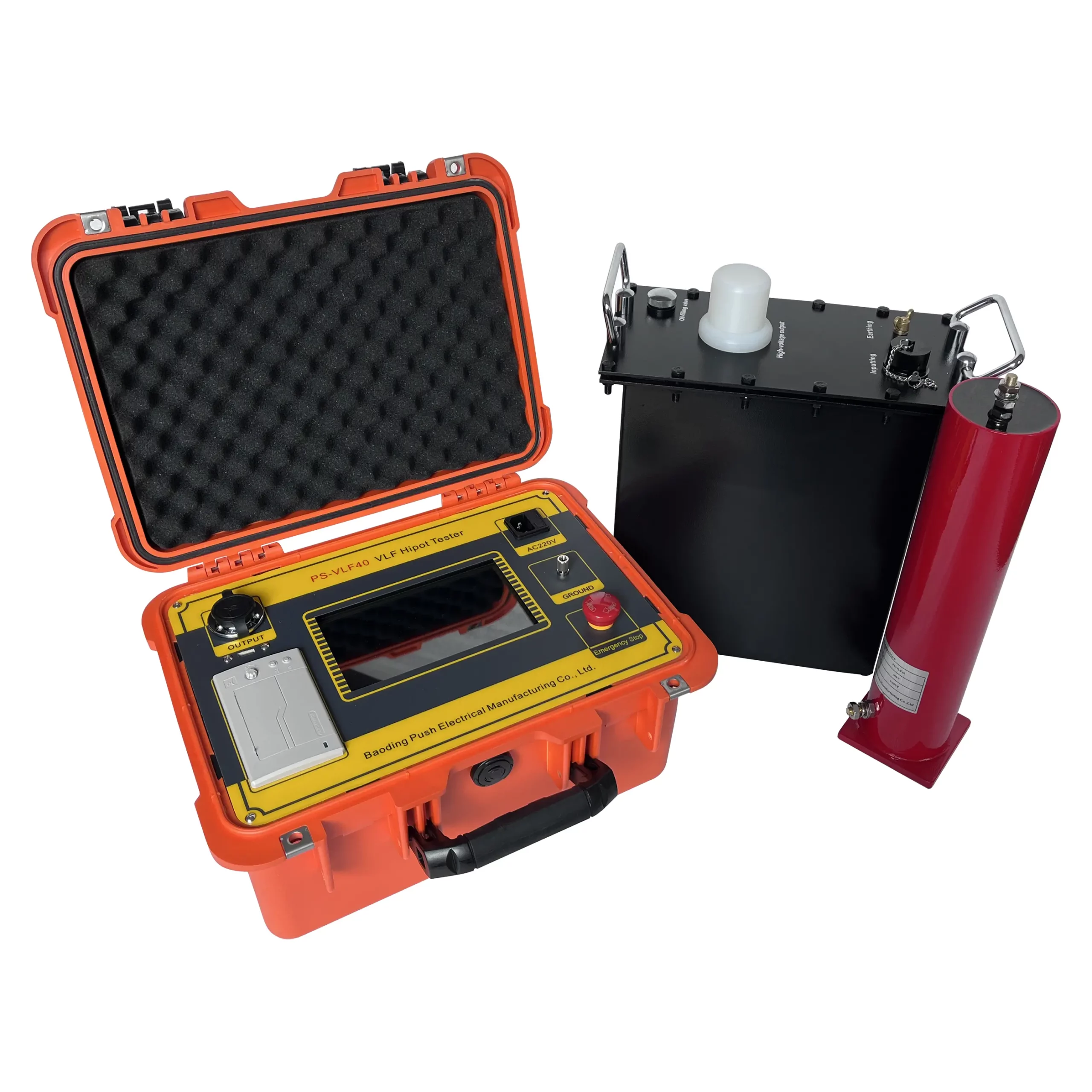In the dynamic domain of electrical engineering, safety is not merely a priority but an absolute imperative. Here is where VLF AC hipot testers take center stage, holding sway with a powerful fusion of innovation and steadfast reliability to uphold the integrity of electrical insulation systems.Let us embark on a journey to delve into the significance of these testing instruments, their pivotal role in safeguarding power infrastructure, and the technological marvels that underpin their operation.
Enlightening you on the nuances of VLF Hipot Testers.
VLF stands for Very Low Frequency, and in the realm of high voltage testing, it’s a term that carries significant weight. The VLF hipot Tester is a specialized instrument, and it is the VLF AC hipot tester. VLF hipot testers evaluate the insulation integrity of cables, transformers, motors, and other electrical equipment by subjecting them to high-voltage, low-frequency alternating current (AC) stress.
VLF (Very Low Frequency) HIPOT testers play an important role in ensuring the integrity and safety of electrical equipment. These advanced instruments are designed to test the insulation of high-voltage cables, motors, transformers and other electrical equipment by applying high voltages, typically at a frequency of 0.1 Hz to 1 Hz. The use of VLF HIPOT tester technology offers significant advantages over traditional DC testing methods as it can more effectively identify insulation defects while being gentler on the device under test.
The ultra low frequency and high voltage generator in the VLF withstand voltage tester is a core product independently developed by using the latest technology in the United States. It adopts 7-inch touch screen, the latest ARM7 single chip microcomputer, high-speed AD acquisition circuit and background management software. It has the characteristics of low noise, energy saving, sine wave high-voltage waveform, high-voltage electronic switch polarity and so on.
How VLF Hipot Testers Work?
The principle of VLF Hipot tester lies in its ability to apply high voltage to the insulation system at a frequency close to the natural frequency of the cable, thereby revealing potential weaknesses that may have gone undetected during DC testing. By subjecting the insulator to VLF AC voltage, any existing defects or partial discharges within the insulator can be detected, allowing preventive maintenance and minimizing the risk of unexpected failure. This method allows for a more accurate assessment of insulation condition, helping to ensure the reliability and safety of electrical systems.
The Importance of Hipot Testing
Hipot testing, short for high potential testing or dielectric withstand testing, is a critical step in ensuring the safety and reliability of electrical systems. By subjecting components to voltages higher than their rated operating voltage, hipot testers evaluate the insulation’s ability to withstand electrical stress without breakdown or leakage.
This testing process helps identify potential weaknesses or defects in insulation materials, such as air voids, moisture ingress, or manufacturing flaws, which could compromise the equipment’s performance or pose safety hazards to personnel.
Advanced VLF HIPOT Tester Features
- Advanced technology: digital frequency conversion technology, microcomputer control, pressure rise, pressure reduction, measurement, protection, etc
- Comprehensive protection: multiple protection (over-voltage protection, over- current protection at high and low voltage sides), rapid action (when acting)
Room ≤10ms), the instrument is safe and reliable. - Safety and reliability: the controller is connected with the low voltage of the high voltage generator, with photoelectric control, safe and reliable use.
- Small volume and light weight: it is very convenient for outdoor operation.
Enhancing Safety with VLF Technology
The VLF AC hipot tester exploits the unique characteristics of low-frequency AC voltages to provide precise and controlled test conditions. And at the same time minimizing the risk of insulation damage. These testers typically operate from 0.1 Hz to 1 Hz and therefore offer several key advantages:
- Enhanced Sensitivity: VLF AC hipot tester has the capacity to reveal insulation vulnerabilities that could potentially go unnoticed at elevated frequencies, offering a more thorough evaluation of insulation integrity.
- Diminished Dielectric Strain: Frequencies at lower levels impose milder stress on insulating materials as opposed to high-frequency assessments, thereby mitigating the likelihood of partial discharge or breakdown occurrences throughout testing.
- Adaptability to Extended Cable Networks: VLF AC hipot tester exhibit exceptional suitability for examining extensive cable installations prevalent in power distribution grids, subterranean cables, and high-voltage transmission systems.
Advancing Technology for Enhanced Performance
In recent times, the progressions in VLF AC Hipot Tester technology have markedly enhanced their prowess and dependability. Attributes like integrated safety protocols, digital interfaces, automated test sequences, and live monitoring have refined the testing procedure, enhancing efficiency holistically. Moreover, the incorporation of diagnostic utilities such as partial discharge identification and insulation resistance gauging allows for a more comprehensive evaluation of insulation state and fosters the implementation of proactive maintenance approaches.
VLF AC hipot testers represent a cornerstone of electrical safety practices, offering a robust and versatile solution for assessing the integrity of insulation systems in a wide range of applications. By harnessing the power of low frequency AC testing, these instruments empower engineers and technicians to identify potential hazards, mitigate risks, and uphold the highest standards of safety and reliability in electrical infrastructure worldwide. As technology continues to evolve, VLF AC testers will undoubtedly remain indispensable tools in the ongoing quest to protect lives and preserve the integrity of our electrical systems.
